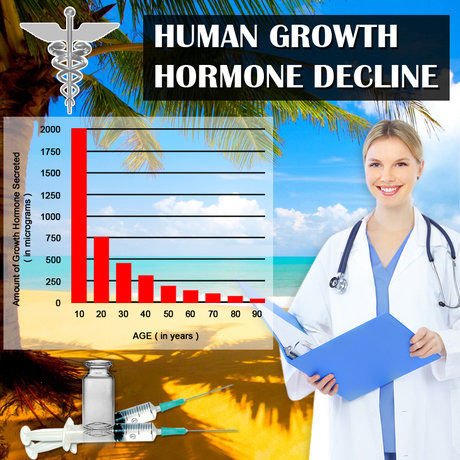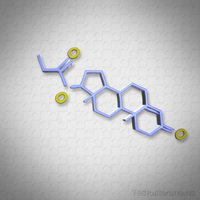Introduction to Hair Loss
Hair loss, medically known as alopecia, is a common concern affecting a significant portion of the American male population. While often perceived as a cosmetic issue, hair loss can have profound psychological impacts, influencing self-esteem and social interactions. This article delves into the medical science behind hair loss, offering insights into its causes, mechanisms, and potential treatments, specifically tailored for American men.
The Biology of Hair Growth
Human hair growth follows a cyclic pattern, comprising three distinct phases: anagen (growth), catagen (transitional), and telogen (resting). The anagen phase, which can last from two to eight years, is when hair actively grows. The catagen phase, lasting about two weeks, marks the end of active growth. Finally, the telogen phase, lasting three months, is when the hair rests before falling out, making way for new hair growth. Understanding these cycles is crucial in comprehending the dynamics of hair loss.
Common Causes of Hair Loss in Men
In men, the most prevalent form of hair loss is androgenetic alopecia, commonly known as male pattern baldness. This condition is genetically predisposed and hormonally driven, primarily influenced by dihydrotestosterone (DHT), a derivative of testosterone. DHT binds to receptors in hair follicles, shortening the anagen phase and leading to progressively thinner and shorter hair until the follicles eventually stop producing hair.
Other causes of hair loss include telogen effluvium, triggered by stress, illness, or hormonal changes, and alopecia areata, an autoimmune disorder where the body attacks its own hair follicles. Nutritional deficiencies, particularly in iron and zinc, can also contribute to hair thinning.
The Role of Genetics and Hormones
Genetics play a pivotal role in male pattern baldness. Specific genes inherited from both parents can increase susceptibility to hair loss. The androgen receptor gene, located on the X chromosome, is particularly influential. Men with a family history of baldness are more likely to experience hair loss themselves.
Hormonally, the conversion of testosterone to DHT by the enzyme 5-alpha-reductase is a critical factor. DHT's impact on hair follicles is mediated through the androgen receptor, leading to miniaturization of the hair follicle over time. This process is what ultimately results in the characteristic receding hairline and thinning at the crown.
Diagnostic Approaches
Diagnosing the cause of hair loss involves a thorough medical history and physical examination. Dermatologists may use tools such as the pull test, where a small number of hairs are gently pulled to assess the extent of shedding, or the pluck test, where hairs are examined under a microscope to determine the growth phase. In some cases, a scalp biopsy may be necessary to rule out other conditions.
Treatment Options and Advances
Treatment for hair loss varies depending on the underlying cause. For androgenetic alopecia, medications such as minoxidil and finasteride are commonly prescribed. Minoxidil, a topical treatment, is believed to prolong the anagen phase and increase follicle size. Finasteride, an oral medication, works by inhibiting the conversion of testosterone to DHT, thereby reducing its impact on hair follicles.
Emerging treatments include low-level laser therapy (LLLT), which is thought to stimulate hair growth by enhancing cellular metabolism, and platelet-rich plasma (PRP) therapy, where a patient's own plasma, rich in growth factors, is injected into the scalp to promote hair growth.
Psychological Impact and Coping Strategies
The psychological impact of hair loss should not be underestimated. Many men experience a decline in self-confidence and may feel self-conscious about their appearance. Counseling and support groups can be beneficial in addressing these emotional challenges. Additionally, embracing hair loss through styling choices or considering hair restoration options such as hair transplants can help men regain a sense of control over their appearance.
Conclusion
Understanding the science behind hair loss is essential for American men facing this common issue. By recognizing the biological, genetic, and hormonal factors at play, men can make informed decisions about treatment and management strategies. As research continues to advance, new and more effective treatments are on the horizon, offering hope for those affected by hair loss.
Contact Us For A Fast And Professional Response

- Unveiling the Silent Saboteur: The Connection Between Scalp Infections and Hair Loss in American Males [Last Updated On: February 18th, 2025] [Originally Added On: February 18th, 2025]
- Revolutionizing Confidence: A Comprehensive Guide to Medical Wigs for Hair Loss in American Males [Last Updated On: February 20th, 2025] [Originally Added On: February 20th, 2025]
- Chemotherapy-Induced Hair Loss in American Males: Understanding, Coping, and Regrowth Strategies [Last Updated On: March 1st, 2025] [Originally Added On: March 1st, 2025]
- Decrypting the Hidden Layers: Hair Loss as a Latent Medical Dilemma [Last Updated On: March 2nd, 2025] [Originally Added On: March 2nd, 2025]
- Exploring the Impact of Thyroid Disorders on Hair Health: Understanding the Connection, Clinical Symptoms, and Effective Management Strategies [Last Updated On: March 3rd, 2025] [Originally Added On: March 3rd, 2025]
- Advancements in Surgical Hair Loss Treatments for Men [Last Updated On: March 4th, 2025] [Originally Added On: March 4th, 2025]
- Comprehensive Guide to Understanding and Managing Hair Loss in American Men [Last Updated On: March 5th, 2025] [Originally Added On: March 5th, 2025]
- Understanding Pediatric Hair Loss: Causes, Impact, and Treatment Options [Last Updated On: March 6th, 2025] [Originally Added On: March 6th, 2025]
- The Efficacy of Over-the-Counter Hair Loss Treatments: Scientific Evidence and Safety Considerations [Last Updated On: March 7th, 2025] [Originally Added On: March 7th, 2025]
- Embracing Holistic Approaches for Hair Health: A Comprehensive Guide for American Males [Last Updated On: March 8th, 2025] [Originally Added On: March 8th, 2025]
- The Genetic Basis of Male Pattern Baldness: Insights, Treatments, and Prevention Strategies [Last Updated On: March 9th, 2025] [Originally Added On: March 9th, 2025]
- Understanding the Link Between Stress and Hair Loss in American Males: A Comprehensive Medical Insight [Last Updated On: March 12th, 2025] [Originally Added On: March 12th, 2025]
- Hormonal Insights into Male Hair Loss: Causes, Treatments, and Lifestyle Impact [Last Updated On: March 13th, 2025] [Originally Added On: March 13th, 2025]
- Understanding Hair Loss in American Men: Separating Myths from Medical Realities [Last Updated On: March 15th, 2025] [Originally Added On: March 15th, 2025]
- Allergies and Hair Loss: Exploring the Link for American Males [Last Updated On: March 16th, 2025] [Originally Added On: March 16th, 2025]
- Understanding Hair Loss: Causes, Types, and Advanced Treatments for American Males [Last Updated On: March 17th, 2025] [Originally Added On: March 17th, 2025]
- Male Hair Loss: Understanding Genetic, Hormonal, and Lifestyle Risk Factors [Last Updated On: March 18th, 2025] [Originally Added On: March 18th, 2025]
- Topical Treatments for Hair Loss: Efficacy, Application, and Emerging Options [Last Updated On: March 18th, 2025] [Originally Added On: March 18th, 2025]
- Hair Loss in American Men: Psychological Impacts and Holistic Coping Strategies [Last Updated On: March 19th, 2025] [Originally Added On: March 19th, 2025]
- Revolutionizing Hair Loss Treatment: Innovations and Hope for American Males [Last Updated On: March 20th, 2025] [Originally Added On: March 20th, 2025]
- Diabetes and Hair Loss in American Males: Understanding the Link and Managing Risks [Last Updated On: March 21st, 2025] [Originally Added On: March 21st, 2025]
- Monogenic Hair Loss: Genetic Insights and Management for American Males [Last Updated On: March 21st, 2025] [Originally Added On: March 21st, 2025]
- Antidepressants and Hair Loss in Men: Mechanisms, Identification, and Management Strategies [Last Updated On: March 21st, 2025] [Originally Added On: March 21st, 2025]
- Alopecia Universalis: Understanding, Managing, and Coping for American Males [Last Updated On: March 21st, 2025] [Originally Added On: March 21st, 2025]
- Hair Loss in American Males: A Potential Indicator of Heart Disease Risk [Last Updated On: March 22nd, 2025] [Originally Added On: March 22nd, 2025]
- Effective Hair Loss Treatments for American Men: Medications and Mechanisms [Last Updated On: March 22nd, 2025] [Originally Added On: March 22nd, 2025]
- Drug-Induced Hair Loss in American Males: Causes, Symptoms, and Management Strategies [Last Updated On: March 22nd, 2025] [Originally Added On: March 22nd, 2025]
- Innovative Hair Loss Solutions for American Males: From Stem Cells to 3D Printing [Last Updated On: March 22nd, 2025] [Originally Added On: March 22nd, 2025]
- Hair Follicle Miniaturization: Understanding and Managing Hair Loss in American Males [Last Updated On: March 23rd, 2025] [Originally Added On: March 23rd, 2025]
- Steroids and Hair Loss in American Men: Causes, Risks, and Management Strategies [Last Updated On: March 23rd, 2025] [Originally Added On: March 23rd, 2025]
- Autoimmune Disorders and Hair Loss in American Males: Mechanisms, Conditions, and Treatments [Last Updated On: March 23rd, 2025] [Originally Added On: March 23rd, 2025]
- Male Hair Loss: Causes, Prevention, and Treatment Options for American Men [Last Updated On: March 23rd, 2025] [Originally Added On: March 23rd, 2025]
- Anabolic Steroids and Hair Loss: Mechanisms, Prevalence, and Management in American Males [Last Updated On: March 23rd, 2025] [Originally Added On: March 23rd, 2025]
- Hair Loss in Young American Males: Causes, Impacts, and Treatment Needs [Last Updated On: March 23rd, 2025] [Originally Added On: March 23rd, 2025]
- Telogen Effluvium in American Men: Causes, Symptoms, and Management Strategies [Last Updated On: March 23rd, 2025] [Originally Added On: March 23rd, 2025]
- Understanding Hair Loss: Causes, Treatments, and Hope for American Men [Last Updated On: March 23rd, 2025] [Originally Added On: March 23rd, 2025]
- Aromatherapy for Hair Loss: Benefits, Evidence, and Considerations for American Males [Last Updated On: March 23rd, 2025] [Originally Added On: March 23rd, 2025]
- Medical Hair Loss in Men: Causes, Management, and Prevention Strategies [Last Updated On: March 23rd, 2025] [Originally Added On: March 23rd, 2025]
- Aging Males and Hair Loss: Causes, Impacts, and Management Strategies [Last Updated On: March 24th, 2025] [Originally Added On: March 24th, 2025]
- Anemia and Hair Loss in American Males: Causes, Diagnosis, and Management Strategies [Last Updated On: March 24th, 2025] [Originally Added On: March 24th, 2025]
- Guide to Hair Loss Surgery Techniques for American Males [Last Updated On: March 24th, 2025] [Originally Added On: March 24th, 2025]
- Hair Cloning: A Breakthrough in Hair Loss Treatment for American Males [Last Updated On: March 24th, 2025] [Originally Added On: March 24th, 2025]
- Innovative Strategies to Mitigate Chemotherapy-Induced Hair Loss in American Males [Last Updated On: March 25th, 2025] [Originally Added On: March 25th, 2025]
- Vitamin Deficiencies and Hair Loss in American Males: Causes and Solutions [Last Updated On: March 25th, 2025] [Originally Added On: March 25th, 2025]
- Hair Extensions and Permanent Hair Loss: Risks for American Males [Last Updated On: March 25th, 2025] [Originally Added On: March 25th, 2025]
- Post-COVID Hair Loss in American Males: Causes, Symptoms, and Management Strategies [Last Updated On: March 26th, 2025] [Originally Added On: March 26th, 2025]
- LLLT: A Non-Invasive Hair Loss Solution for American Men [Last Updated On: March 26th, 2025] [Originally Added On: March 26th, 2025]
- American Men Triumph Over Hair Loss: Success Stories and Effective Treatments [Last Updated On: March 27th, 2025] [Originally Added On: March 27th, 2025]
- AI Revolutionizes Male Pattern Baldness Diagnosis and Treatment [Last Updated On: March 27th, 2025] [Originally Added On: March 27th, 2025]
- Androgenetic Alopecia: Advances in Treatment and Understanding Mechanisms [Last Updated On: March 27th, 2025] [Originally Added On: March 27th, 2025]
- Advanced Diagnostic Technologies for Hair Loss in American Men: A Comprehensive Overview [Last Updated On: March 27th, 2025] [Originally Added On: March 27th, 2025]
- Thyroid Disorders and Hair Loss in American Males: Causes and Management [Last Updated On: March 27th, 2025] [Originally Added On: March 27th, 2025]
- Immune System Disorders and Hair Loss in American Males: Mechanisms, Symptoms, and Treatments [Last Updated On: March 27th, 2025] [Originally Added On: March 27th, 2025]
- Managing Hair Loss: Medical Insights and Societal Perceptions for American Men [Last Updated On: March 27th, 2025] [Originally Added On: March 27th, 2025]
- Shock Loss After Hair Transplant: Causes, Timeline, and Management for American Males [Last Updated On: March 27th, 2025] [Originally Added On: March 27th, 2025]
- Hair Dyes and Hair Loss in American Males: Investigating the Correlation [Last Updated On: March 27th, 2025] [Originally Added On: March 27th, 2025]
- Postpartum Hair Loss: Causes, Effects, and Support Strategies for New Mothers [Last Updated On: March 27th, 2025] [Originally Added On: March 27th, 2025]
- PCOS-Like Symptoms and Hair Loss in American Males: Hormonal Insights [Last Updated On: March 27th, 2025] [Originally Added On: March 27th, 2025]
- PRP Therapy: A Promising Solution for Hair Loss in American Men [Last Updated On: March 28th, 2025] [Originally Added On: March 28th, 2025]
- High Blood Pressure and Hair Loss: Understanding the Indirect Links in American Males [Last Updated On: March 29th, 2025] [Originally Added On: March 29th, 2025]
- Androgenetic Alopecia: Genetic Insights and Emerging Treatments for Male Pattern Baldness [Last Updated On: March 29th, 2025] [Originally Added On: March 29th, 2025]
- Scalp Psoriasis in American Males: Impacts, Hair Loss, and Management Strategies [Last Updated On: March 29th, 2025] [Originally Added On: March 29th, 2025]
- Trichotillomania in American Males: Understanding, Impact, and Treatment Options [Last Updated On: March 30th, 2025] [Originally Added On: March 30th, 2025]
- Rogaine: Benefits, Risks, and Realistic Expectations for Hair Loss Treatment [Last Updated On: March 30th, 2025] [Originally Added On: March 30th, 2025]
- Understanding and Treating Hair Loss in Men: A Guide for Physicians [Last Updated On: March 31st, 2025] [Originally Added On: March 31st, 2025]
- Male Menopause and Hair Loss: Understanding and Managing Thinning in American Men [Last Updated On: April 2nd, 2025] [Originally Added On: April 2nd, 2025]
- Stem Cell Therapy: A New Hope for Hair Loss in American Males [Last Updated On: April 4th, 2025] [Originally Added On: April 4th, 2025]
- Hair Loss in American Men: Psychological Impacts and Holistic Coping Strategies [Last Updated On: April 4th, 2025] [Originally Added On: April 4th, 2025]
- Efficacy of Hair Loss Shampoos for American Males: Ingredients and Benefits Analyzed [Last Updated On: April 5th, 2025] [Originally Added On: April 5th, 2025]
- Hair Loss in American Males: Psychological Impacts and Holistic Treatment Approaches [Last Updated On: April 6th, 2025] [Originally Added On: April 6th, 2025]
- Understanding CCCA: Causes, Symptoms, and Management for American Males [Last Updated On: April 7th, 2025] [Originally Added On: April 7th, 2025]
- Minoxidil: Effective Hair Loss Treatment for American Men [Last Updated On: April 7th, 2025] [Originally Added On: April 7th, 2025]
- Hair Breakage vs. Hair Loss: Key Differences and Solutions for American Males [Last Updated On: April 7th, 2025] [Originally Added On: April 7th, 2025]
- Managing Hair Loss After Bariatric Surgery in American Males: Causes and Solutions [Last Updated On: April 9th, 2025] [Originally Added On: April 9th, 2025]
- Smoking and Hair Loss: Mechanisms, Evidence, and Mitigation Strategies for American Males [Last Updated On: April 11th, 2025] [Originally Added On: April 11th, 2025]
- Lifestyle Strategies to Combat Hair Loss in American Males [Last Updated On: April 11th, 2025] [Originally Added On: April 11th, 2025]
- Weight Loss Diets and Hair Loss: Insights for American Males [Last Updated On: April 12th, 2025] [Originally Added On: April 12th, 2025]
- Gastrointestinal Health and Hair Loss: Mechanisms, Impacts, and Management Strategies [Last Updated On: April 12th, 2025] [Originally Added On: April 12th, 2025]
- Dietary Strategies for American Men to Combat Hair Loss and Promote Hair Health [Last Updated On: April 13th, 2025] [Originally Added On: April 13th, 2025]
- Protein Shakes and Hair Loss: Understanding the Link for American Males [Last Updated On: April 13th, 2025] [Originally Added On: April 13th, 2025]

















